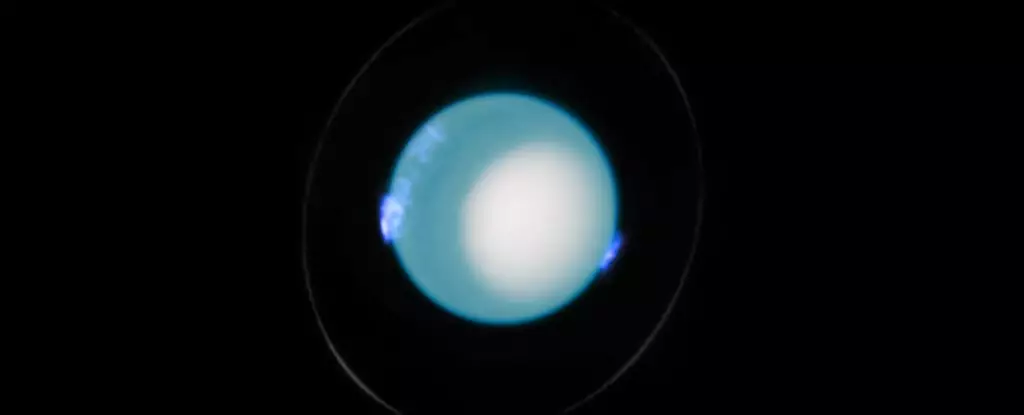As we venture deeper into the cosmos, our understanding of distant worlds continues to evolve with revolutionary discoveries. A recent breakthrough in the study of Uranus has shown that the length of a day on this enigmatic ice giant isn’t what we once thought it was. Scientists, led by astrophysicist Laurent Lamy from the Paris Observatory, have confirmed that a complete rotation of Uranus takes 17 hours, 14 minutes, and 52 seconds—a full 28 seconds longer than previous estimates derived from data collected by Voyager 2 over three decades ago. At first glance, this increment may appear trivial, but it has significant implications for both planetary science and our comprehension of this peculiar planet.
Why the Inaccuracy Matters
This revision in Uranus’s rotation rate is not just a matter of timing; it serves as a pivotal reference point for a myriad of scientific endeavors. Prior to this discovery, the inaccuracies in our understanding of Uranus’s day length had created a ripple effect throughout planetary studies. The previous outdated coordinates often led to inconsistencies, making the tracking of Uranus’s magnetic poles an arduous task. Lamy articulates the gravity of the situation best, explaining that the old rotation period caused the loss of orientation of the planet’s magnetic poles just a few years post-Voyager 2’s flyby. Essentially, the failure to grasp the complete dynamics of Uranus limits our capability to study not only this distant planet but also the outer reach of our solar system.
The Challenges of Observing Distant Worlds
Uranus, along with its icy neighbor Neptune, remains an elusive target for astronomers due to its staggering distance from the Sun. This remote location means that these planets appear dim and are difficult to study, to the point where only the Voyager mission has ventured close enough to glean substantial data. Because of such hurdles, our past knowledge of these gas giants is marred by conditions that were unique to the time of those early flybys. The scarcity of up-to-date information means that our previous assumptions about these planets may have been flawed or overly simplified.
Innovative Methods for Accurate Measurement
To obtain this new measurement, Lamy and his team turned to innovative techniques involving the Hubble Space Telescope. The telescope’s observations from 2011 to 2022 of Uranus’s ultraviolet auroras allowed the researchers to zero in on the planet’s magnetic poles—a task made complicated by Uranus’s unique axial tilt, which is almost parallel to the plane of its orbit. This data was crucial in developing a clearer and more accurate model of the planet’s rotation. Auroras on Uranus, similar to those on Earth, are formed when solar particles interact with the planet’s magnetic field.
By analyzing how these auroras shifted over several years, scientists could derive the planet’s rotational period with unprecedented precision. Indeed, this measurement is touted to be more accurate than that of even the mighty Jupiter. The methodology holds promise not just for Uranus but for other giant planets, offering a pathway to establish a uniform understanding of their rotation rates.
Future Implications and Missions
The excitement surrounding this discovery extends beyond academic curiosity. The new measurement allows for the establishment of an updated longitude system, which in turn facilitates longitudinal comparisons of auroras spanning nearly four decades. This opens the door for future exploratory missions to Uranus, suggesting that our engagement with the ice giant is far from over and full of possibilities. With enhanced data reliability, researchers can better plan for upcoming missions that could unlock more secrets held by this fascinating planet.
As we continue to refine our techniques and technologies, each advancement allows us to unearth a little more about the vast universe surrounding us. The revelation regarding Uranus’s day length not only underscores the importance of precise measurements in planetary science but also highlights the excitement of exploration and discovery in our quest to understand the cosmos.

